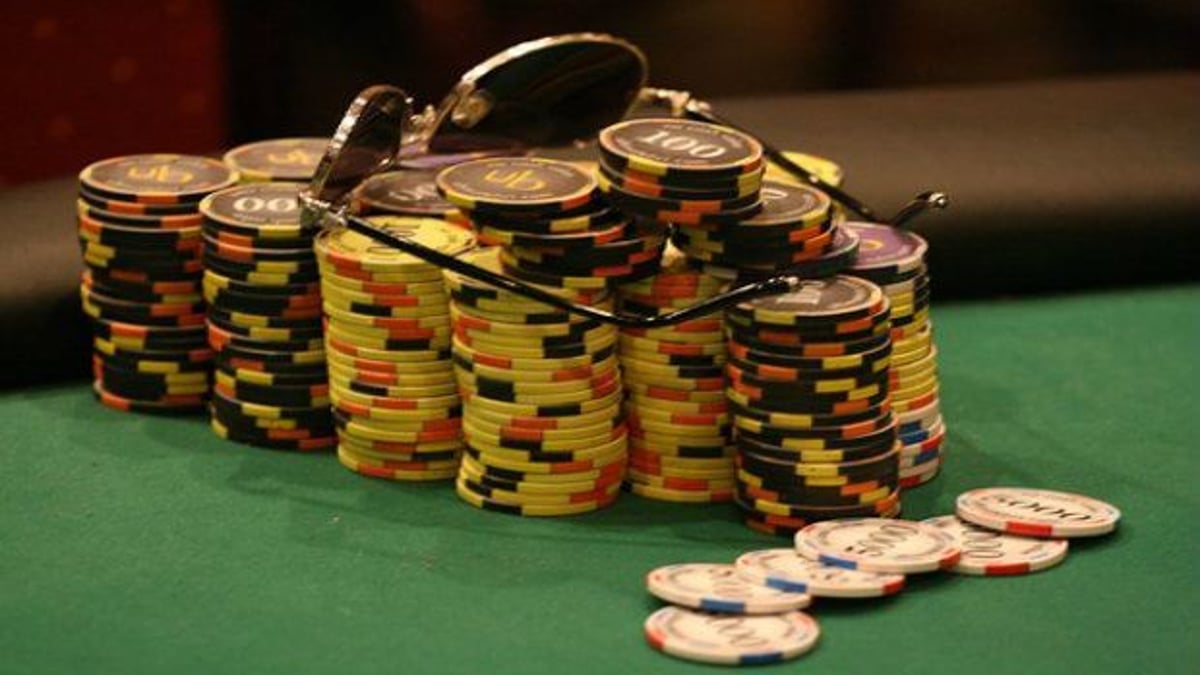Poker Tournaments: Medium Stack Strategy

It can be tricky deciding what to do when looking down at a medium stack in a tense poker tournament. Where do you begin? Do you try and maintain your stack, or attack to try and bolster your chips? For every poker player, whether a beginner or a seasoned pro, an air-tight strategy is key to staying, and succeeding, in the game.
What is a Medium Stack?
Every player has an individual view about the size of a medium stack, which varies depending on the amount of chips you tend to play during a tournament. When looking at the number of big blinds, it is often safe to suggest you stop being short-stacked when you have mustered 12 or more big blinds in your stack.
It follows, then, that somewhere in the range of 14-25 big blinds can fall under the category of a medium stack in lower stakes tournaments. An exception to this would be in big Buy-In Tournaments where there are going to be huge stacks that will dwarf the 25 big blinds in front if you, but the scale is still relative.
Pick a Strategy
No matter what stage of the tournament you’re at, make sure you've got a plan of how to build your stack as, essentially, a bigger tower has the potential to help you land a bigger payout.
It makes sense to mix up your play depending on the tournament. For example, if it's slow and steady, you can try and snatch blinds and small pots to build gradually. You're more likely to feel at ease at this pace, and you may find it easier to throw away hands as you find time to chip away at opponents' stacks.
If the structure is fast, you may be inclined to take more risks. Try and get chips in on the flop when you are marginally ahead, as although there's a chance this could go against you, it also gives you the opportunity to build quickly for the impending big blinds. Do avoid relinquishing chips and playing weak hands where possible, so you don't end up committing to the pot with rags.
In any tournament, a medium stack means that hand selection is key. Consistently look to play top-pair hands and big pocket pairs. This size stack means you have the most to lose and the most to gain at once.
Apply Pressure
Don’t get overly comfortable with your position – always try and pick up chips when the opportunity presents itself. A great way to do this is by targeting the short stacks. Don’t be afraid to ‘bully’ the short-stacks in the manner the bigger stacks will go after you.
Every player will at some point be in a vulnerable position where they are forced to throw away hands they would usually have played, after not wanting to be pot-committed with a small amount of chips in behind. Make people think about their chips so you can sneak blinds, as early raises go some way towards buying the pot if you are strong with the resources you have.
Calculated Moves
Don’t let the game pass you by. You don’t have to succumb to the big stacks as you can still make strong plays and take calculated risks. Don’t be afraid to attack with pairs, strong suited connectors and AJ+. Strong play, particularly if you have previously been rather restrained, can help pick up chips without going to showdown.
Finish the Job
There’s no point doing the early work if you fail to capitalise when it really matters. Don’t get overly aggressive to a point where you are playing hands you’re not keen on completely committing to, as this raises the opportunity to lose valuable chips or perhaps over-commit and exit the tournament. Keep the pressure on with re-steals and re-raises to show you won’t be overpowered when the situation is right and you will soon forge your way back to big stack territory.
If you think you've got what it takes to master medium stack strategy, visit Winner Poker today!
Stay In The Loop With New Casino Sites & Offers!
Free Spins. Exclusive Bonuses. Sent Weekly.




